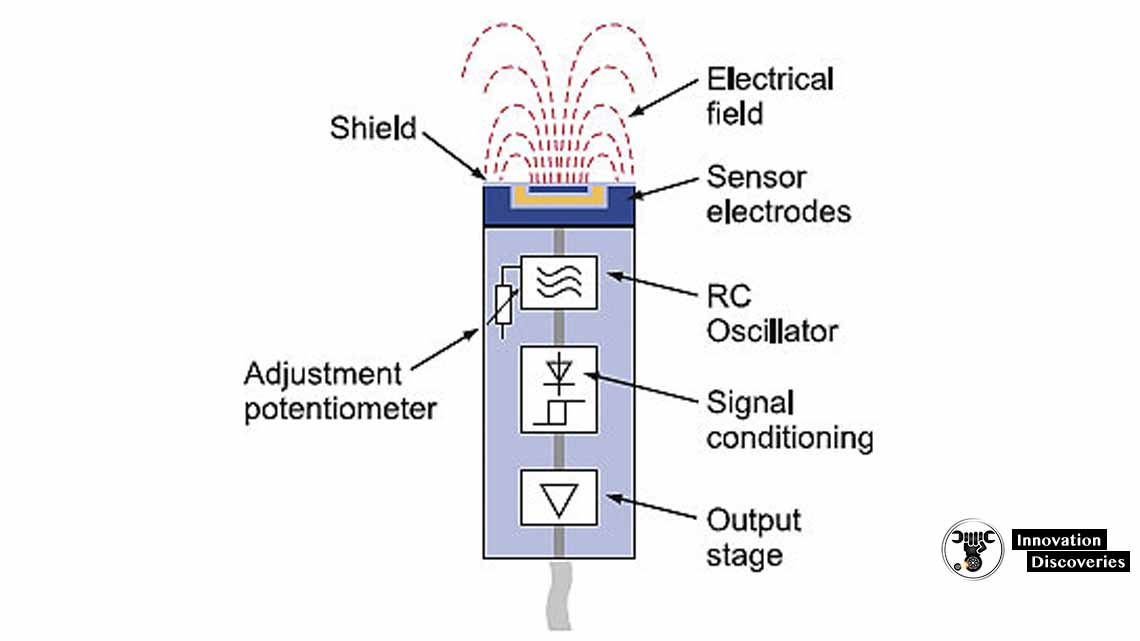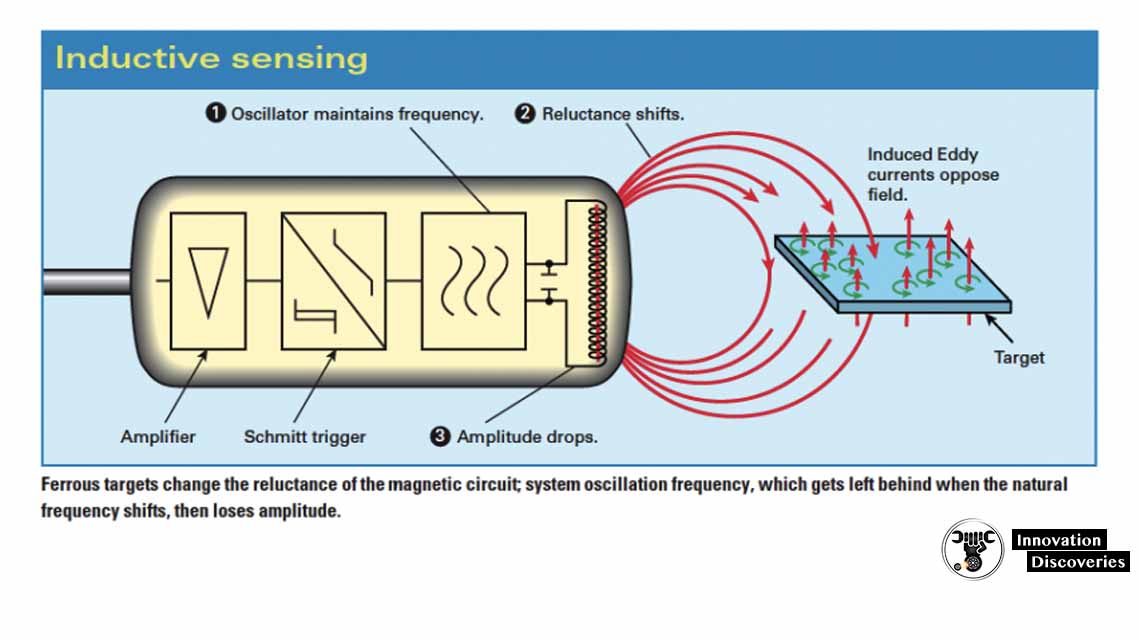A proximity sensor is a sensor that detects the presence of an object/person.
A sensor that can be used for detecting the presence of objects
Surrounding it without having any physical contact is termed as a proximity sensor.
This can be done using the electromagnetic field;
Or electromagnetic radiation beam in which the field or return signal
Changes in the event of the presence of any object in its surroundings.
The object being sensed is often referred to as the proximity sensor’s target.
Different proximity sensor targets demand different sensors.

The maximum distance that this sensor can detect is a defined nominal range.
Some sensors have adjustments of the nominal range or means to report a graduated detection distance. Proximity sensors can have a high
Reliability and long functional life,
Because of the absence of mechanical parts and lack of physical
Contact between the sensor and the sensed object.
The proximity sensor on most smart-phones with touchscreen exists to disable accidental touch events. The most common scenario is the ear coming in contact with
The screen and generating touch events, while on a call. The simplest proximity sensors do not measure distance. A bumper can be passive,
Simply making the robot bounce away from things it hits.
More often, a bumper has a switch that closes when it makes contact,
Sending a signal to the controller causing the robot to back away. When whiskers hit something, they vibrate. This can be detected, and a signal sent to the robot controller.
Types Of Proximity Sensor
Capacitance sensor
Detects change in capacitance, usually for water-based objects,
Like fingers or filled bottles.
Inductance sensor
Detects change in inductance, which is usually for metals.
Optical sensors
Detects change in light. Usually, there is a separate transmitter (light source) and a detector. Detects anything that brakes the line of sight.
Sound sensors
Basically a speaker and a microphone that detects sound reflected from
Relatively flat surfaces.
Working Of Proximity Sensor
The proximity sensors commonly found in smartphones these days use (IR)
Infrared radiation is invisible to the naked human eye. An IR LED emits IR radiation which bounces off any nearby surface. The reflected rays are detected by
An IR receiver sitting next to the emitter.
Based on the distance between the obstacle and the sensor,
The intensity of light falling on the receiver varies. Hence, a high-intensity light reflected
Back implies there is an obstacle or a surface nearby. Those sensors are generally digital (or sometimes analog).
Also, read:
- VEHICLE SENSORS: FUNCTIONS AND TYPES
- OXYGEN SENSORS /LAMBDA SENSOR/: PARTS, TYPES, WORKING PRINCIPLE AND LOCATION

An Inductive Proximity Sensor consists of an oscillator,
A ferrite core with a coil, a detector circuit,
An output circuit, housing, and a cable or connector. The oscillator generates a sine wave of a fixed frequency. This signal is used to drive the coil.
The coil in conjunction with ferrite core induces an electromagnetic field.
When the field lines are interrupted by a metal object,
The oscillator voltage is reduced,
Proportional to the size and distance of the object from the coil.
The reduction in the oscillator voltage is caused;
By eddy currents induced in the metal interrupting the field lines.
This reduction in voltage of the oscillator is detected by the detecting circuit.


How Does a Self-Driving Car See?
http://innovationdiscoveries.space/how-does-a-self-driving-car-see/